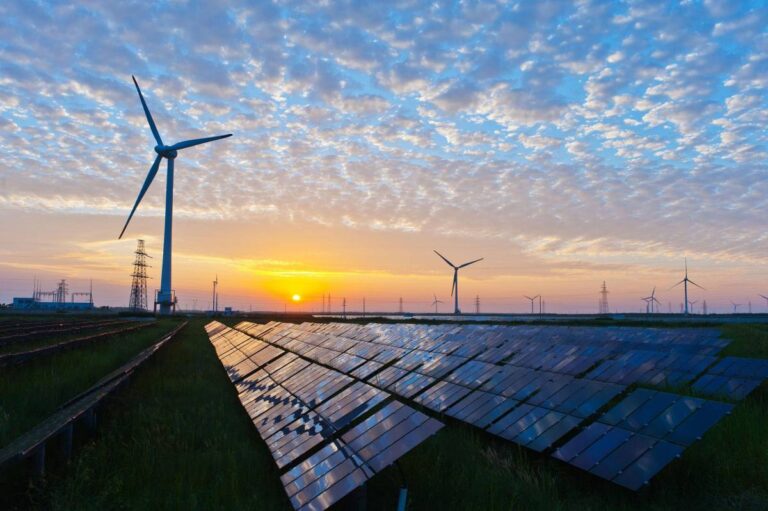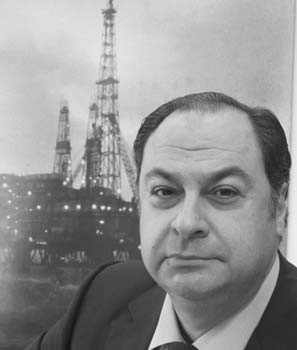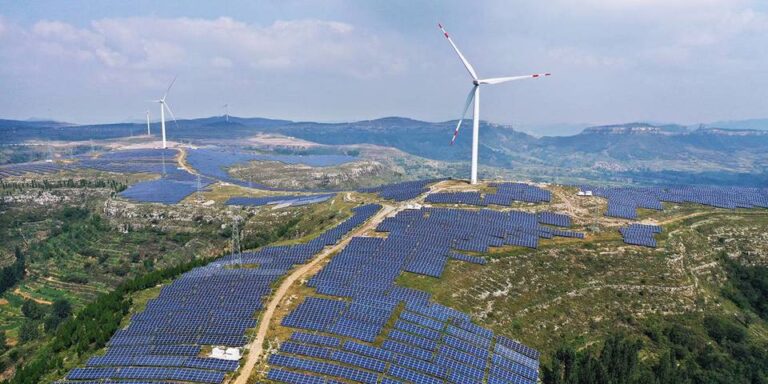La Cop26 di Glasgow: le linee guida per i Paesi del Mediterraneo

Roudi Baroudi: un appuntamento fondamentale per definire strategie politiche economiche efficaci a contrastare il cambiamento climatico.
Il noto esperto a livello internazionale in campo energetico Roudi Baroudi, pone in evidenza una riflessione in concomitanza con l’imminente arrivo della conferenza sul cambiamento climatico delle Nazioni Unite (COP26) che si terrà quest’anno a Glasgow.
Baroudi definisce questo appuntamento memorabile e storico in particolare per i paesi del bacino del Mar Mediterraneo, Italia compresa. Fa osservare che l’aumento delle temperature e la crisi climatica globale è in atto e gli eventi dell’estate 2021 ne sono la testimonianza reale.
Il fenomeno degli incendi, per esempio, si manifesta con dimensioni e intensità insolite rispetto al passato ed anche nel caso di attività dolosa l’aridità circostante e le alte temperature hanno favorito la propagazione violenta nelle aree colpite generando numerose morti, danni alle proprietà e distruzioni dei terreni agricoli coltivati. In casi come quello della Turchia seguiti da forti inondazioni dovute a piogge torrenziali dopo pochi giorni.
Questi fenomeni non sono più eventi sporadici localizzati in determinate aree, ma costituiscono una vera e propria testimonianza della catastrofe climatica in atto.
Questo ci impone di moltiplicare gli sforzi e sperare di poter invertire la tendenza prima che raggiunga un punto di non ritorno. Se non andremo in questa direzione, continua Baroudi:” la nostra specie dovrà affrontare un futuro sempre più complesso con più incendi, innalzamento del livello del mare, accelerazione dell’acidificazione degli oceani, calo degli stock ittici, tempeste più violente, siccità più lunghe e intense, raccolti compromessi, milioni di rifugiati climatici e fame di massa”.
Svariati paesi del Mediterraneo, specialmente appartenenti ad Asia ed Africa hanno già situazioni complesse dal punto di vista territoriale per via della posizione geografica (Sud Italia incluso), inoltre i paesi con meno disponibilità economica fanno ancora molta fatica nella conversione ad impianti con minor impatto ambientale.
Nonostante questo scenario apocalittico, incalza Baroudi, non tutto è perduto. L’Unione europea ha compiuto progressi importanti rispetto alla maggior parte del resto del mondo e sta adottando delle politiche più stringenti sulle emissioni.
Anche gli Stati Uniti stanno intensificando i propri sforzi dopo quattro anni di cambio rotta sotto l’amministrazione Trump. In tutto il mondo, finalmente, si sta avendo maggiore consapevolezza del problema in maniera più trasversale dal pubblico al privato.
Alla COP26, i leader ed i referenti politici dei paesi partecipanti dovrebbero lavorare costruttivamente ed ascoltare scienziati ed attivisti che chiedono un’azione più rapida ed efficace, inclusa una maggiore assistenza finanziaria per aiutare i paesi meno fortunati a unirsi seriamente alla lotta per il cambiamento climatico.
I programmi che i paesi del Mediterraneo porteranno a Glasgow saranno cruciali perché, nonostante la situazione in atto, la maggior parte di questi stati ha un vantaggio territoriale: ampi spazi e condizioni quasi ideali per le turbine eoliche offshore. Uno studio recente, che utilizza una varietà di tecnologie per elaborare dati previsionali, stima il potenziale combinato di energia eolica di tutti i 23 paesi euro mediterranei (in modo alquanto prudente) a quasi 1,5 milioni di megawatt. Si consideri che l’intera industria nucleare mondiale ha una capacità di circa 400.000 MW, ovvero meno di un terzo di quella che il Mediterraneo potrebbe produrre solamente con impianti eolici. Senza calcolare l’impiego di altre tecnologie: l’idrocinetica sia fluviale che marina (onde e maree), geotermica (on e offshore) e solare (200.000-300.000 MW).
Questa strategia darebbe una propulsione allo sviluppo di molti paesi che oggi hanno uno scarso accesso all’energia elettrica a prezzi accessibili, inoltre l’indotto relativo alle costruzioni degli impianti darebbe nuovi posti di lavoro oltre a molteplici benefici: la possibilità di sostituire i vecchi impianti di produzione più inquinanti, ridurre gradualmente l’importazione di carburanti fossile, rivendere nella rete l’eccesso di produzione energetica ed investire il ricavato in infrastrutture, politiche sociali o ulteriori impianti green.
Uno sviluppo omogeneo delle rinnovabili favorirebbe la transizione progressiva dai combustibili fossili, riducendo le emissioni di carbonio che causano il cambiamento climatico e quindi facendo gli interessi di tutti, ovunque.
Queste proiezioni positive non si avvereranno mai per osmosi. Molti paesi nel Mediterraneo hanno bisogno di assistenza finanziaria e tecnica per mettere in pratica i progetti di conversione. L’accordo di Parigi includeva impegni economici da parte degli stati più ricchi per finanziare i paesi più bisognosi, ma molti governi non hanno rispettato l’accordo. Questo è controproducente, proprio come la mancata distribuzione del vaccino contro il COVID ai paesi del Sud del mondo, un errore imperdonabile che non solo determina la morte di persone innocenti, ma crea anche terreno fertile per nuove varianti del virus. Se la transizione verso un’energia più pulita creasse difficoltà alle popolazioni già svantaggiate, potrebbe venire a mancare il sostegno popolare verso questo percorso, con conseguenze terribili per tutti noi. Se lasciato incontrollato, il cambiamento climatico potrebbe provocare morte e distruzione ovunque creando flussi migratori ingestibili.
Roudi Baroudi conclude esortando la COP26 a produrre nuovi programmi di finanziamento da parte dei paesi ricchi verso quelli più poveri senza creare situazioni di assistenzialismo. Ci sono moltissime risorse a disposizione e c’è poco tempo per agire, quindi gli stati finanziatori non possono permettersi di sbagliare. I prestiti agevolati andranno messi a disposizione per i paesi più virtuosi che garantiranno la finalizzazione dei progetti. L’unico modo per farlo è articolare una strategia coerente per eseguire progetti rilevanti e fattibili con tempi e budget ben definiti. In particolare, i governi regionali devono dissipare i timori giustificati che, i fondi destinati ai progetti per le energie rinnovabili o ad altri strumenti di de carbonizzazione, andranno invece a riempire le tasche di funzionari locali corrotti.
Queste sono le linee guida che deve seguire quest’anno la conferenza di Glasgow. La lotta ai cambiamenti climatici è ampiamente considerata come la sfida più importante che la nostra specie abbia mai affrontato e la capacità della regione di proteggersi e di esercitare il proprio peso sarà in bilico alla COP26. I paesi che si presentano con piani ben sviluppati per progetti concreti avranno la strada spianata per varie forme di finanziamento. Coloro che non lo faranno saranno inevitabilmente tagliati fuori.









DENVER – For decades, we at the Rocky Mountain Institute (now RMI) have argued that the transition to clean energy will cost less and proceed faster than governments, firms, and many analysts expect. In recent years, this outlook has been fully vindicated: costs of renewables have consistently fallen faster than expected, while deployment has proceeded more rapidly than predicted, thereby reducing costs even further.
Thanks to this virtuous cycle, renewables have broken through. And now, new analyses from two authoritative research institutions have added to the mountain of data showing that a rapid clean-energy transition is the least expensive path forward.
Policymakers, business leaders, and financial institutions urgently need to consider the promising implications of this development. With the United Nations Climate Change Conference (COP26) in Glasgow fast approaching, it is imperative that world leaders recognize that achieving the Paris climate agreement’s 1.5° Celsius warming target is not about making sacrifices; it is about seizing opportunities. The negotiation process must be reframed so that it is less about burden-sharing and more about a lucrative race to deploy cleaner, cheaper energy technologies.
With the world already suffering from climate-driven extreme weather events, a rapid clean-energy transition also has the virtue of being the safest route ahead. If we fail at this historic task, we risk not only wasting trillions of dollars but also pushing civilization further down a dangerous and potentially catastrophic path of climate change.
One can only guess why forecasters have, for decades, underestimated the falling costs and accelerating pace of deployment for renewables. But the results are clear: bad predictions have underwritten trillions of dollars of investment in energy infrastructure that is not only more expensive but also more damaging to human society and all life on the planet.
We now face what may be our last chance to correct for decades of missed opportunities. Either we will continue to waste trillions more on a system that is killing us, or we will move rapidly to the cheaper, cleaner, more advanced energy solutions of the future.
New studies have shed light on how a rapid clean-energy transition would work. In the International Renewable Energy Agency (IRENA) report The Renewable Spring, lead author Kingsmill Bond shows that renewables are following the same exponential growth curve as past technology revolutions, hewing to predictable and well-understood patterns.
Accordingly, Bond notes that the energy transition will continue to attract capital and build its own momentum. But this process can and should be supported to ensure that it proceeds as quickly as possible. Policymakers who want to drive change must create an enabling environment for the optimal flow of capital. Bond clearly lays out the sequence of steps that this process entails.
Examining past energy revolutions reveals several important insights. First, capital is attracted to technological disruptions, and tends to flow to the areas of growth and opportunity associated with the start of these revolutions. As a result, once a new set of technologies passes its gestation period, capital becomes widely available. Second, financial markets draw forward change. As capital moves, it speeds up the process of change by allocating new capital to growth industries, and by withdrawing it from those in decline.
The current signals from financial markets show that we are in the first phase of a predictable energy transition, with spectacular outperformance by new energy sectors and the de-rating of the fossil-fuel sector. This is the point where wise policymakers can step in to establish the necessary institutional framework to accelerate the energy transition and realize the economic benefits of building local clean-energy supply chains. As we can see from market trends highlighted in the IRENA report, the shift is already well underway.
Reinforcing the findings from the IRENA report, a recent analysis from the Institute for New Economic Thinking (INET) at the Oxford Martin School shows that a rapid transition to clean energy solutions will save trillions of dollars, in addition to keeping the world aligned with the Paris agreement’s 1.5°C goal. A slower deployment path would be financially costlier than a faster one and would incur significantly higher climate costs from avoidable disasters and deteriorating living conditions.
Owing to the power of exponential growth, an accelerated path for renewables is eminently achievable. The INET Oxford report finds that if the deployment of solar, wind, batteries, and hydrogen electrolyzers continues to follow exponential growth trends for another decade, the world will be on track to achieve net-zero-emissions energy generation within 25 years.
In its own coverage of the report, Bloomberg News suggests as a “conservative estimate” that a rapid clean-energy transition would save $26 trillion compared with continuing with today’s energy system. After all, the more solar and wind power we build, the greater the price reductions for those technologies.
Moreover, in his own response to the INET Oxford study, Bill McKibben of 350.org points out that the cost of fossil fuels will not fall, and that any technological learning curve advantage for oil and gas will be offset by the fact that the world’s easy-access reserves have already been exploited. Hence, he warns that precisely because solar and wind will save consumers money, the fossil-fuel industry will continue to try to slow down the transition in order to mitigate its own losses.
We must not allow any further delay. As we approach COP26, it is essential that world leaders understand that we already have cleaner, cheaper energy solutions ready to deploy now. Hitting our 1.5°C target is not about making sacrifices; it is about seizing opportunities. If we get to work now, we can save trillions of dollars and avert the climate devastation that otherwise will be visited upon our children and grandchildren.